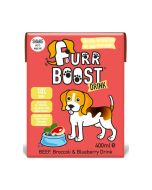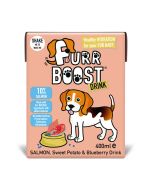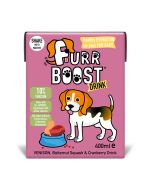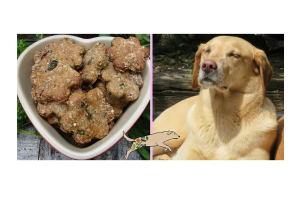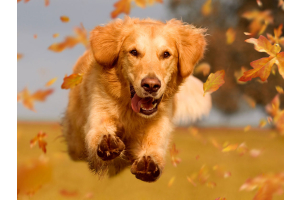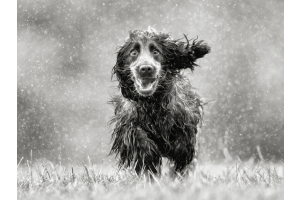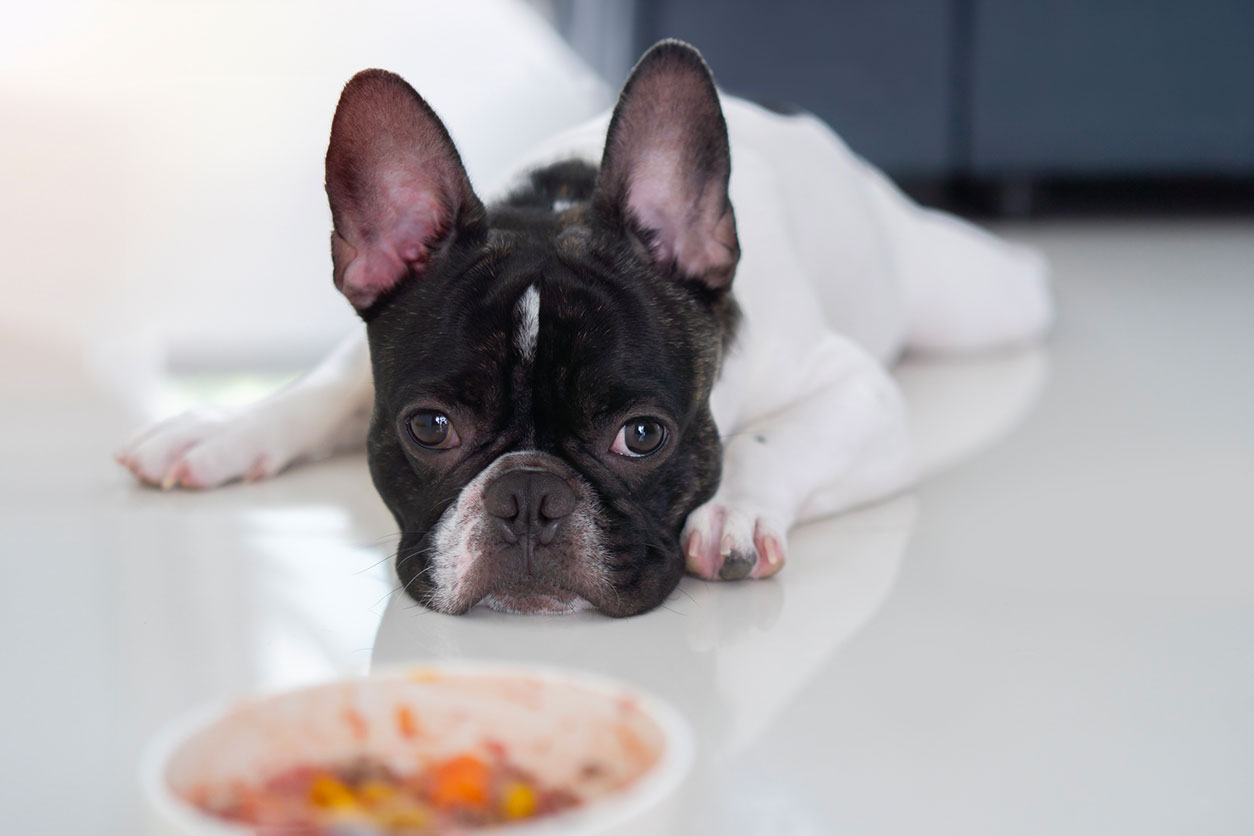
How to help a fussy eater
There are times when your dog may be off their normal food, which of course can be of great concern. There can be a number of reasons to explain why your dog has changed its eating habits. All too often we assume this must be because they are feeling unwell, but this isn't always the case, as this could be for a number of reasons. It is important to find out what is behind the change in food preferences and hopefylly this blog will give you some informationto you need.
When your dog is off its food, there may be other reasons, other than not finding their food appealing. There could be underlying health reasons.
So what could be the reasons your dog is avoiding eating?
1. Are there any underlying health issues? These could include:
- Teeth Discomfort - could there be an issue in the mouth, such as tooth decay, gum disease or similar issues? If your dog is fed kibble, which is hard then dental issues may be making it harder (and painful) for your dog to eat. This could be stopping your dog from wanting to eat because he is finding it painful to do so. Signs to look out for include: bleeding / red gums, increased dribbling, pawing at their face / mouth, signs of pain in the mouth. Feeding "wet" / moist food may be better in this instance. Wet food is also likley to have more smell to it and therefore be more appetising.
- Digestive Discomfort / stomach problems - are their digestive issues? Stomach problems are often as a result of scavenging and eating something that they shouldn't have! Or could your dog have a sensitivity to his food - such as wheat? In this scenario your dog won't want to eat to eat his food, as it is associating discomfort with that food. Is your dog feeling nauseous?
- Organ Issues - problems with your dogs kidneys or pancreas could be making your dog feel unwell and off his food.
- General Illness - if your dog is unwell then that could mean that they are off their food. This could be as a result of pain, an infection or something more serious like pancreatitis etc.
- The older dog - older dogs do experience changes in appetite. They eyesight becomes worse, their sense of smell diminishes which means that food becomes less appetising and they may also be in pain - such as joint pain and dental issues; or it could be doggy dementia. Make sure you feed them at a regular time each day, keeping their dog bowl in the same place (especially if eyesight is a problem). Older dogs, especially if they have joint issues, may struggle to stand up when they are eating / slip on the floor, so help them by putting down a mat for them to stand on when they are eating.
- Hormonal
- Female dogs - when a female dog is in heat, changes in their hormone levels can affect their appetite. Hormone changes can also result in mood swings which can also affect appetite.
- Male dogs - when a female dog is in heat in the vicinity, male dogs are able to sense this and may be too aroused to eat!
- Is your dog on any medication? If your dog is taking medication as this can affect your dogs appetite, as, whilst uncommon, some can make your dog feel unwell.
2. So what else could be going on?
- Stress - Like us, dogs like structure and routine, and even a small change to this can cause upset. Your dog may be stressed about something or feeling anxious and again this may be affecting your dog's digestion and appetite. Feed them somewhere calm and offer plenty of reassurance. Typically dogs who are stressed or anxious return to normal feeding patterns after a few days.
- Self-regulation - Dogs are known for being able to regulate their food intake, so if your dog is fit and well, with no obvious signs of injury or illness, then they simply could be doing this. Your dog may loose a little weight, just make sure that they don't drop below a 4 on the Body Condition Chart. Follow the tips below to encourage them to eat more consistently
- Where is your dog fed? some dogs don't like being watched when eating their food or naybe finding it too noisy or busy. If this is the case, try a quiet corner of a room or even a separate room
- A change in routine / environment? has there been a recent change in routine? such as moving house, returning to work after a long break or children returning to school after the holidays, or children heading off to university. Have your moved house or having building work done? Has there been the arrival of a new pet or family member, have there been household arguments? Our dogs like routine, especially older dogs and some dogs may feel anxious or unable to cope if their routine has changed which could be putting them off their food.
- Has there been a recent loss of a family member or pet? Have the dynamics of the household changed? Some dogs, for example gobble food down if there is competition with another dog in the family!
- Dog Bowls - what material is your dog bowl made of? Is your dog struggling to eat out of their bowl or is it unfcomfortable to eat from because it is sliding on the floor? If so, look at changing their bowl? Some dogs, for example don't like a metal bowl. Also think what have your washed your dog's bowl in as some detergents can leave a residue which could be putting the dog off eating from it.
- How are you feeding your dog / look at alternative feeding tools? Some dogs may prefer not to be fed from a bowl and would prefer more mental stimulation by working for their food. If you are feeding kibble sprinkle it around the kitchen to encourage scent work which engages your dogs natural instincts. Explore different ways of feeding your dog, which may increase their interest and curiousity - such as Licki Mats, slow feeders, different types of dog bowls and plates, Kongs / Toppls etc.
- The Weather - dogs can also be sensitive to changes in the weather, with some breeds being more affected than others. Warmer, more humid weather especially can lead to a possible decrease in appetite
3. Food related issues
Could the food itself be the cause of the problem? Or is your dog refusing to eat because they have had too many treats and "titbits" during the day? If so, what can you do? The key is to make their food as palatable as possible to entice those fussy eaters!
- Food Type - has your dog gone off the food that he is being fed? There can be a number of reasons for this:-
-
- Holding out for something better! - Is your dog "holding out" for something tastier having learned that if he doesn't eat his normal food he will get more attention and be offered an alterative? Dogs are very perceptive, and may have learned that if they "hold out" and don't eat their normal food, they will be given something more tasty to get them to eat, especially if this has happened before. If this is the case, tough love is the recommended approach. If your dog has not eaten their food after 10-15 minutes, remove it until the next meal.
- Food is boring? Is your dog fed up with his food; as many pet parents feed the same flavour and brand of dog food every day, because they think that their dog likes it. Try feeding a range of flavours..afterall you wouldn't want to be fed the same food every day! Try a different brand of food or even try a different type of food. Has a brand recently changed its formula that your dog is less keen on? Could the food that you are feeding have spoiled or is out of date?
- A recent change in food? Dogs can be fussy about food textures and the taste of their food, so if you have recently introduced a new food which has a different texture (such as kibble fed dog transitioning to raw) then there may be some resistance. It could be a matter of giving your dog time to adjust to theses changes. If you are introducing a new protein source, then you can introduce this slowly. If your dog is struggling transitioning to raw, because they miss the "crunch" of kibble. In this instance you could look at adding a Freeze-dried raw food as a topper to help with the transition.
- Too many treats / snacks during the day? - often dogs who are not wanting to eat their food can be eating too many treats! Make sure that treats / snacks only account for 10% of daily calorie requirements, otherwise this can lead to an unbalanced diet, as well as causing health issues. If feeding kibble, use that as treats, but make sure your dog is fed less at meal times.
4. Make existing food more appealing:-
Never force your dog to eat. But these suggestions below may just do the trick!
- Food Temperature - Make sure the food being served is at room temperature as many dogs, especially older dogs, don’t like cold food. You could try warming their food slightly (ensure you mix well); this may also help as it can bring out the scent molecules. Dogs prefer stronger smelling foods!
- Moisten the Food - consider moisening the food, especially kibble, which is very dry in nature, with warm water, or improve palatability by adding a bone broth. As well as being a hydration booster, bone broth has a whole host of benefits for your dog. Bone Broth can be homemade or can be purchased — we sell a range of good quality bone broths.
Karnlea Bone Broth is ready made and comes in four flavours. Boil & Broth's bone broth is dehydrated, so simply add water and comes in six flavours. Finally Furr Boost sell a range of healthy hydration liquids, with six different "doggy" flavours. Another way to add moisture is to add kefir or honey. - Add a topper to make the food more appealing - as detailed above, adding a tasty bone broth may help the food to taste better and be more appealing. Another option is to add a topper: these can be a great appetite stimulant, enticing picky eaters with nice smells and tasty flavours! These can be wet or dry, and can either be added to the top layer of food or be mixed through the food....but please be mindful what topper you are feeding and how you are feeding it!
- Toppers can be home made - such as adding something strong smelling like sardines or tripe or they can include tasty cuts of meat - such as pates, or even a blend, or you can add vegetables and fruit.
- Pre-made Toppers are sold at pet shops, making it super convenient. These can be dry - such as fish granola. Or add your dog's favourite treat onto off their food. Semi-moist toppers may include pre-made dog pates, and are also a way of adding moisture to food.
REMEMEBER.......
Stay Calm - when dealing with a fussy eater, stay calm. Dogs are excellent readers of human emotion and if you are anxious at your dog's meal time, then your dog will pick up on this and be anxious too!
Keep a record - try and identify any patterns to your dog's change in eating habits.
See a Vet - A healthy dog will not starve itself. Of course if you are worried, then please contact your Vet for advice and for your peace of mind. And you would definately need to contact your Vet if your dog is:
- showing signs of injury or illness
- seems unwell - not himself, struggling to go to the toilet, not wanting to get up / engage.
- Is feeling tired / lethargic
- displaying behavioural changes
- has been off its food for 24 hours, or hasnt eaten anything in the last 12 hours and this is accompanied by sickness or diarrhoea
- isn't drinking either
- losing weight
Hopefully this information will give you a greater understanding of your dog's meal time needs and the possible broad range of reasons that could be behind their change in eating habits/ increased fussiness. Be patient and hopefully mealtimes will become an enjoyable experinece once again!
Resources
The Kennel Club (2024): Reasons Why My Dog Won't Eat their Food. Available at: https://www.thekennelclub.org.uk/health-and-dog-care/health/health-and-care/a-z-of-health-and-care-issues/reasons-why-my-dog-won-t-eat-their-food (Accessed: 28th February 2024).
Raw Feeding for Dogs Made Simple (2024): Fussy Eaters. Available at: https://www.rffdmsuk.co.uk/post/1-7-fussy-eaters (Accessed 2nd March 2024).


